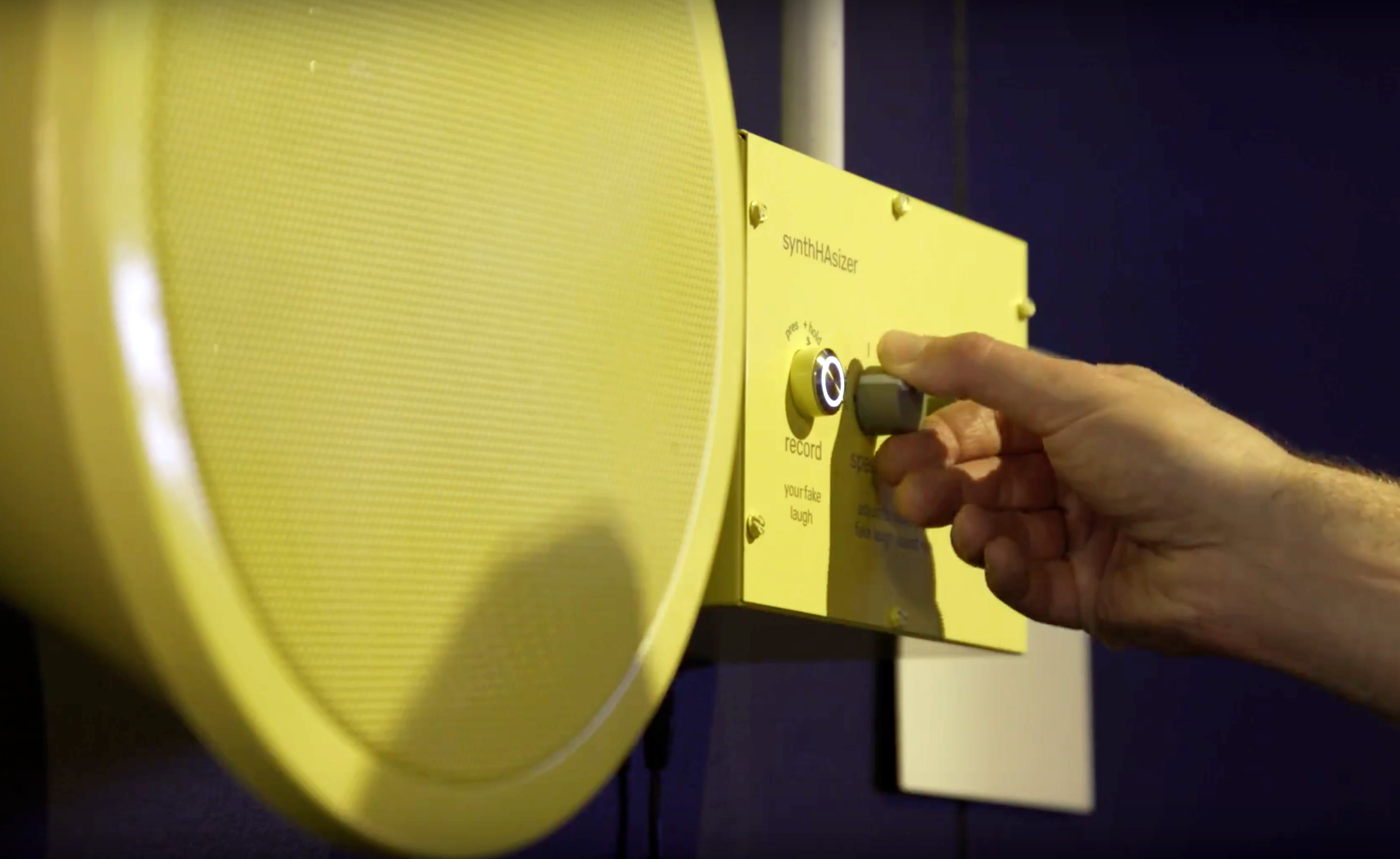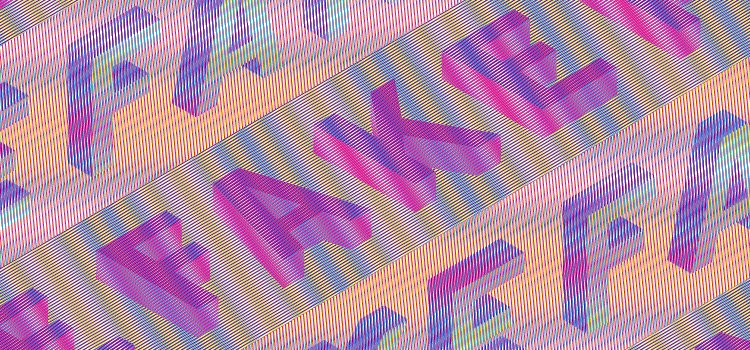syntHAsizer
What if you could remix your laugh from fake to ‘real’?
A machine for playing with laughter as a verbal display of communication.

We fake laughter all the time.
We do it to be polite, hide our ignorance, and even to fit in. Our social interactions sometimes depend on it.
Studies show that fake and real laughs vary in speed, pitch, breath sounds and crescendo — and this is consistent across cultures.
The syntHAsizer is a tool for playing with this verbal display of communication. With it, visitors record their own fake laugh and use sonic filters to remix it from fake to real.
We don’t know how fake laughter evolved, but we do know it is part of our speech, and follows specific sonic patterns. Unlike real, guttural laughter, fake laughter is ‘spoken’, and we’ve learned to recognize its forgery.
The syntHAsizer was commissioned for Science Gallery Dublin’s exhibition FAKE.

As we get older, we get better at discerning real from fake laughter, peaking in perception in our late 30s.
The most important sonic variable known so far is speed—laughs that are sped up or decreased in duration by 33% sound more real. And this means we also get better at figuring out the social motives of fake laughter.
With the syntHAsizer, gallery visitors record their own fake laugh, remixing the speed and pitch.
Then they play back their ‘real’ laugh, and keep tuning until they perceive it as ‘real’.



Do we want an AI to be able to produce ‘real’ laughter?
Days after the syntHAsizer was installed at Science Gallery Dublin, Alexa (Amazon’s digital assistant) started laughing.
Unprompted giggle fits were reported on national news and people took to twitter, documenting Alexa’s eerie behavior. It turns out we were not comfortable with our digital assistants cackling as they please.
Humor is thought to be one of the final frontiers of AI. It is one of our most complex and under studied behaviors. Many scientists believe that machine learning would be hard-pressed to catalog, comprehend, replicate, and respond to all types of humor in the moment.
The syntHAsizer invites visitors to explore and debate whether they want an AI to produce ‘real’ laughter.


Referenced Studies + Articles
The animal nature of spontaneous human laughter (Gregory A. Bryant, 2014)
Towards a social function account of laughter: Acoustic features convey reward, affiliation, and dominance (Adrienne Wood, 2017)
Amazon Knows Why Alexa Was Laughing At Its Customers (New York Times, 2018)
2018-PRESENT
FAKE: THE REAL DEAL? at Science Gallery Dublin
March 2 2018 - June 3 2018
From fake meat to fake emotions, if faking it gets the job done, who cares? From biomimicry to forged documents, from scandals to substitutes — when is authenticity essential, when is copying cool, and what is the boundary between a fakery faux-pas and a really fantastic FAKE?
We have long been obsessed with authenticity, the genuine article, the real deal. But, in both the natural world and human society, faking, mimicking, and copying can be highly reliable strategies for success. When appearance is everything — could a fake be just as valuable as the real thing?
CURATORS
Oron Catts, Director of SymbioticA, University of Western Australia
Nicola Marples, Professor of Zoology, Trinity College Dublin
Fiona Newell, Professor of Psychology, Trinity College Dublin
Lynn Scarff, Director, Science Gallery Dublin
FAKE: THE REAL DEAL? at Science Gallery Dublin
March 2 2018 - June 3 2018
From fake meat to fake emotions, if faking it gets the job done, who cares? From biomimicry to forged documents, from scandals to substitutes — when is authenticity essential, when is copying cool, and what is the boundary between a fakery faux-pas and a really fantastic FAKE?
We have long been obsessed with authenticity, the genuine article, the real deal. But, in both the natural world and human society, faking, mimicking, and copying can be highly reliable strategies for success. When appearance is everything — could a fake be just as valuable as the real thing?
CURATORS
Oron Catts, Director of SymbioticA, University of Western Australia
Nicola Marples, Professor of Zoology, Trinity College Dublin
Fiona Newell, Professor of Psychology, Trinity College Dublin
Lynn Scarff, Director, Science Gallery Dublin
CREDITS
Artist- Laura Allcorn
Scientist- Greg Bryant (Professor, Department of Communication at UCLA; his research investigates the many ways that acoustic structure in speech is shaped by communicative goals.
Technologists- Thomas Wester + Ben Purdy (Glowbox)
Designer- Matthew Philip Williams, fabrication
PRESS
You can listen to a radio interview about the project and IFCI with Norma Burke on near.fm.
Artist- Laura Allcorn
Scientist- Greg Bryant (Professor, Department of Communication at UCLA; his research investigates the many ways that acoustic structure in speech is shaped by communicative goals.
Technologists- Thomas Wester + Ben Purdy (Glowbox)
Designer- Matthew Philip Williams, fabrication
PRESS
You can listen to a radio interview about the project and IFCI with Norma Burke on near.fm.
